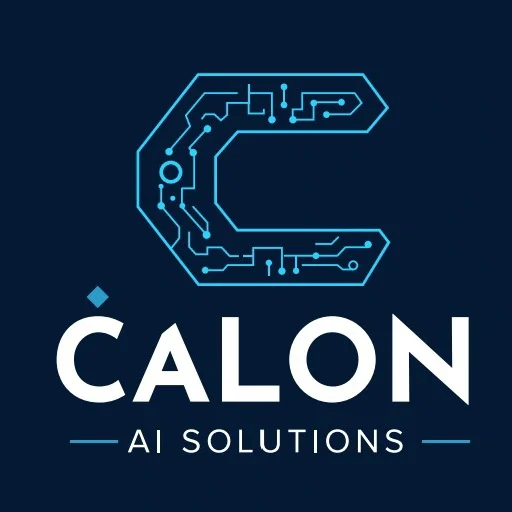50 Years of Artificial Intelligence: How Far Have We Come?
50 years of artificial intelligence—it’s incredible to look back at how far we’ve come. From rudimentary chatbots in university labs to AI-guided systems in healthcare, finance, and beyond, AI evolution over decades has revolutionised society. Yet this transformation didn’t happen overnight. Early pioneers like Alan Turing and John McCarthy laid the groundwork, propelling research that transitioned AI from theory to practical, day-to-day utility. Today, artificial intelligence is fast becoming a general purpose technology, influencing everything from personal assistants in our pockets to large-scale automated manufacturing. So, how did we get here, and where are we headed next?

The Early Decades—Foundations of AI
1950s–1960s: The Spark of an Idea
• Turing Test and Symbolic AI In 1950, Alan Turing proposed a test to measure a machine’s ability to exhibit intelligent behavior. His ideas ignited early discussions around computational thinking, forming one of the first historical milestones in AI. Researchers aimed to program machines to mimic human problem- solving, often using symbolic logic.
• Dartmouth Conference (1956)
John McCarthy and other thought leaders convened at Dartmouth College, where the term “Artificial Intelligence” was officially coined. This meeting birthed ambitious goals for machine learning and problem-solving techniques.

1970s–1980s: Expert Systems and Early Hurdles
• Rise of Expert Systems
By the 1970s, researchers developed expert systems that imitated the reasoning process of
specialized human experts—an advancement in artificial intelligence that found application in medicine and engineering.
• The AI Winter
Enthusiasm soon cooled as funding diminished due to unmet expectations. This period, often referred to as the “AI Winter,” highlights the cyclical nature of AI research and investment.
The 1990s–2000s—Resurgence and Milestones
The Power of Data and Machine Learning
• From Symbolic to Subsymbolic
Researchers gradually shifted from purely symbolic logic to subsymbolic methods like neural networks. This allowed computers to learn from data, boosting accuracy in tasks like speech recognition.
• AI in Mainstream Culture
Iconic events, such as IBM’s Deep Blue defeating chess grandmaster Garry Kasparov in 1997, captured public attention. This showcased AI evolution over decades, as machines began outperforming humans in narrow tasks.

The Web Revolution
• Search Engines and Recommendation Systems As the internet boomed, AI found fertile ground in search algorithms, spam filters, and recommendation engines (think Amazon’s product suggestions). Data-driven approaches flourished, benefitting from the growing volume of online information.
• Machine Learning Toolkits Open-source libraries emerged, democratizing AI research and enabling developers worldwide to experiment with machine learning.
The Last Two Decades—A Quantum Leap in AI
2010s—Deep Learning Takes Center Stage
Neural Network Renaissance
Breakthroughs in deep learning, a powerful subfield of AI, led to state-of-the-art performance in image recognition, natural language processing, and more. Much of this success stems from large-scale data sets and parallel computing on GPUs.
• AI as a General Purpose Technology
As neural networks became more efficient, artificial intelligence general purpose technology entered everyday life—voice assistants like Siri and Alexa, chatbots for customer service, and real-time language translation. Visit Our Automate Page to discover how automation can streamline your workflows using modern AI solutions.
2020s—Ethical Considerations and Responsible AI
• Data Privacy and Bias
With increased AI adoption, concerns arise about data privacy and algorithmic bias. Companies and governments now grapple with fairness, transparency, and the social impact of AI decisions.

• Regulations and Governance
Organizations worldwide, including the EU, the US, and Asia-Pacific regulators, are formulating guidelines to ensure ethical AI deployment. This shift underscores the importance of accountability in advancements in artificial intelligence.

Timeline of AI Advancements
Below is a quick summary that ties these historical milestones in AI into a concise timeline:
1. 1950s: Turing’s visionary ideas + Dartmouth Conference
2. 1960s: Growth of symbolic AI and problem-solving programs
3. 1970s: Emergence of expert systems; first AI Winter
4. 1980s: Renewed interest in neural networks
5. 1990s: Deep Blue’s triumph; machine learning gains traction
6. 2000s: Internet-fueled AI growth; open-source ML libraries
7. 2010s: Deep learning revolution; AI becomes mainstream
8. 2020s: Ethical and responsible AI frameworks; expanded enterprise use

Real-World Applications
Healthcare
• Diagnostics & Personalized Medicine
AI models diagnose diseases like cancer and diabetic retinopathy with high accuracy, helping tailor treatments to individual patients.
Finance
• Algorithmic Trading & Fraud Detection
Financial institutions use AI algorithms to process vast transaction data, spotting fraud and executing high-frequency trades more efficiently than human analysts.
Transportation
• Autonomous Vehicles
Self-driving cars use complex AI systems—combining computer vision, path planning, and predictive analytics—to navigate roads and highways safely.Visit Our Personalise Page for tailored AI-driven solutions that cater to your unique
industry needs.
Challenges and Future Directions
While the 50 years of artificial intelligence story is one of triumph and discovery, challenges persist:
1. Data Governance
• Large data sets require robust security measures to prevent breaches.
• Ensuring data quality remains crucial for accurate model training.
2. Bias and Fairness
• Biased training data can lead to discriminatory outcomes.
• Transparent AI frameworks and diverse data sets help mitigate these issues.
3. Regulatory Hurdles
• Global consensus on ethical standards is still evolving.
• Complex compliance regulations may slow AI adoption in certain industries.
4. Long-Term Societal Impact
• AI evolution over decades suggests increasing automation.
• Job displacement vs. job creation debates continue, pushing policymakers to address
workforce retraining.
Conclusion
The journey spanning 50 years of artificial intelligence reveals a trajectory of remarkable breakthroughs, cautious setbacks, and transformative leaps. From the early dreams at Dartmouth to the widespread application of AI as a general purpose technology, we’ve come a long way—and the journey is far from over. As we stand on the cusp of new frontiers—quantum computing, brain-computer interfaces, and advanced machine reasoning—the lessons learned from half a century of AI research guide us toward responsible, impactful innovation. Ready to discover more on how AI can transform your world? Start Your Journey Here and unlock the potential of AI to redefine possibilities in your business or personal endeavors.F

